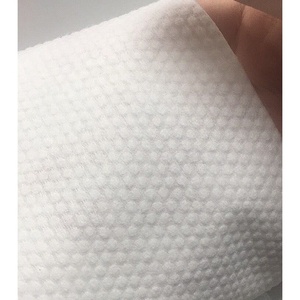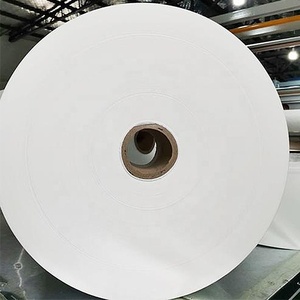(11741 products available)



















































































![[FACTORY] Wholesale <strong>Spunlace</strong> <strong>Nonwoven</strong> Fabric for Wet <strong>Wipes</strong>,viscose/polyester Material <strong>Spunlace</strong> <strong>Nonwoven</strong>,<strong>spunlace</strong> Fabric](http://s.alicdn.com/@sc04/kf/Hf5ef603c02ac40809fc9f7e93d71bc6aN.jpg_300x300.jpg)
![[FACTORY] Wholesale <strong>Spunlace</strong> <strong>Nonwoven</strong> Fabric for Wet <strong>Wipes</strong>,viscose/polyester Material <strong>Spunlace</strong> <strong>Nonwoven</strong>,<strong>spunlace</strong> Fabric](http://s.alicdn.com/@sc04/kf/H19aa89d31e1840488c165b9ce8624dc7Z.jpg_300x300.jpg)
![[FACTORY] Wholesale <strong>Spunlace</strong> <strong>Nonwoven</strong> Fabric for Wet <strong>Wipes</strong>,viscose/polyester Material <strong>Spunlace</strong> <strong>Nonwoven</strong>,<strong>spunlace</strong> Fabric](http://s.alicdn.com/@sc04/kf/H3a0304bed86845849be77c01acfc680bf.jpg_300x300.jpg)
![[FACTORY] Wholesale <strong>Spunlace</strong> <strong>Nonwoven</strong> Fabric for Wet <strong>Wipes</strong>,viscose/polyester Material <strong>Spunlace</strong> <strong>Nonwoven</strong>,<strong>spunlace</strong> Fabric](http://s.alicdn.com/@sc04/kf/H32cdea97489f48d498b5d6905fbf4b46B.jpg_300x300.jpg)
![[FACTORY] Wholesale <strong>Spunlace</strong> <strong>Nonwoven</strong> Fabric for Wet <strong>Wipes</strong>,viscose/polyester Material <strong>Spunlace</strong> <strong>Nonwoven</strong>,<strong>spunlace</strong> Fabric](http://s.alicdn.com/@sc04/kf/Hf6a2b14207a1431b83e8a279164a0fb3b.jpg_300x300.jpg)
![[FACTORY] Wholesale <strong>Spunlace</strong> <strong>Nonwoven</strong> Fabric for Wet <strong>Wipes</strong>,viscose/polyester Material <strong>Spunlace</strong> <strong>Nonwoven</strong>,<strong>spunlace</strong> Fabric](http://s.alicdn.com/@sc04/kf/H7ac0670c1ecc4f6da330a8e952b821c86.jpg_300x300.jpg)



























































































































Spunlace nonwoven wipes are cleaning cloths made from a process called spunlacing. This technique involves using high-pressure water jets to bond layers of fiber together without using any glue or chemicals. The result is a soft, strong fabric that can be used for various wiping tasks. These wipes are popular in industries like healthcare, food service, and personal care because they are effective at removing dirt and germs, yet gentle on surfaces and skin. They can be used dry or damp and disposed of after one use or washed and reused, depending on the type of wipe.
Spunlace nonwoven wipes are made through a process that uses high-pressure water to interlace fibers, creating a durable and absorbent material. These wipes cater to various cleaning and hygiene needs and are used in multiple industries due to their versatility and effectiveness. Below are some common types of spunlace nonwoven wipes.
Dry wipes
Spunlace nonwoven dry wipes are dry cleaning cloths made from nonwoven fabric. They are used in industries like healthcare, electronics, and food service. These wipes are known for their strength, cleanliness, and low linting. They are ideal for tasks that require a non-abrasive surface, such as cleaning delicate instruments, surfaces, and skin. They can be used alone or with a cleaning solution as needed.
Moist wipes
Moist spunlace nonwoven wipes come pre-moistened and are ready to use. They are popular in personal care and healthcare for cleaning skin, hands, and surfaces. These wipes are convenient and portable and effectively remove dirt, fluids, and contaminants. They are often infused with skin-friendly cleansing solutions or disinfectants, making them ideal for maintaining hygiene.
Antibacterial wipes
Antibacterial spunlace nonwoven wipes are treated with antibacterial agents to kill germs on surfaces and skin. They are essential in hospitals, clinics, and kitchens where maintaining a germ-free environment is crucial. These wipes provide a quick and easy way to disinfect tools and surfaces and help prevent the spread of infections.
Cosmetic wipes
Cosmetic spunlace nonwoven wipes are cleansing wipes used for makeup application, removal, and facial cleansing. They are gentle on the skin and help remove makeup and impurities without causing irritation. These wipes are often enriched with moisturizing and nourishing ingredients, making them suitable for daily skincare routines.
Specialty wipes
Specialty spunlace nonwoven wipes are designed for specific uses. Examples include electronic wipes for cleaning electronic devices without lint or scratches, medical wipes for procedures, and automotive wipes for cleaning vehicles. These specialty wipes meet the unique requirements of their respective applications.
Spunlace nonwoven wipes are designed for different applications. Their design combines functionality and user comfort. They are made through a process of hydro-entanglement. This process uses high-pressure water jets to entangle fibers together. The design features include:
The design of spunlace nonwoven wipes considers user needs and application requirements. It provides a functional and user-friendly product. The design elements can be adjusted to make a wipe that meets the needs of commercial, industrial, or consumer uses.
Medical scenario:
In the healthcare industry, spunlace nonwoven wipes are used for medical device cleaning, surgical hand cleansing, and patient body washing. For example, before surgery, the surgeon uses the wipe to wash his hands. The wipe cleans the hands and reduces the chance of infection. Another example is that nurses use the wipes to wash patients who cannot wash themselves. The wipes are gentle on the skin and help keep patients clean.
Industrial scenario:
In the industrial sector, spunlace nonwoven wipes are used for machinery cleaning, surface wiping, and tool cleaning. For example, technicians clean machine parts with the wipes to remove oil and dirt. Another example is that workers wipe surfaces with the wipes to remove dust before working. The wipes are strong and do not tear easily, making them suitable for cleaning tools and removing contaminants.
Retail scenario:
In the retail sector, spunlace nonwoven wipes are used for makeup removal, skin cleansing, and nail care. For example, customers use the wipes to remove makeup before trying on new cosmetics. The wipes gently remove makeup and help keep the faces clean. Another example is that the wipes are used to clean the skin and nails. The wipes are soft and do not irritate the skin or damage the nails.
Automotive scenario:
In the automotive sector, spunlace nonwoven wipes are used for interior cleaning, exterior wiping, and oil stain removal. For example, car detailers use the wipes to clean the dashboard and seats inside the car. The wipes remove dust and stains and help make the car look new. Another example is that the wipes are used to wipe the car's exterior. The wipes are gentle and do not scratch the paint. The wipes also remove oil and are suitable for engines.
Aerospace scenario:
In the aerospace sector, spunlace nonwoven wipes are used for instrument cleaning, cabin maintenance, and component wiping. For example, technicians use the wipes to clean the cockpit instruments. The wipes remove dust and ensure the instruments work correctly. Another example is that the wipes are used to clean the cabin. The wipes are gentle and help keep the cabin clean and fresh for passengers.
Business buyers who want to purchase spunlace nonwoven wipes need to consider many factors to ensure they choose the right product for their use. Here are some points to think about:
End-use application:
Clearly define the specific applications for the wipes. Consider factors like the level of soil removal required, compatibility with surfaces or skin, and whether the wipes will be used in cleanroom environments, healthcare settings, or for general purpose cleaning.
Material properties:
Look for wipes made from durable and absorbent materials that provide good strength when wet and resist tearing or fraying. Choose wipes with hypoallergenic and non-irritating materials for sensitive skin or surfaces.
Performance characteristics:
Evaluate performance characteristics like liquid absorption, tear strength, and linting or residue generation. Consider wipes that offer efficient liquid absorption for effective cleaning or spill response and those with high durability for extended use.
Compatibility:
Ensure the wipes are compatible with the surfaces, equipment, or skin they will be used on. Check if they are safe to use on delicate surfaces and if they are dermatologically tested for skin safety.
Resistance properties:
Consider the resistance properties of the wipes. Select those that are resistant to tearing, chemical damage, and wet conditions for enhanced durability and longer-lasting performance.
Packaging and dispensing:
Choose packaging that allows for convenient dispensing and minimizes the risk of wipes drying out. Look for pop-up or flip-top dispensers that enable easy access and help maintain wipe moisture content.
Regulatory compliance:
Check for compliance with relevant regulations and industry standards. Select wipes that meet environmental standards for biodegradable or compostable materials and those that adhere to healthcare guidelines for infection control in medical settings.
Size and thickness:
Choose the appropriate wipe size and thickness for the intended use. Select larger wipes for surface cleaning and smaller ones for portable or travel applications. Match the thickness to the application, with thicker wipes offering greater durability and absorption.
Environmental considerations:
Consider the environmental impact of the wipes. Select wipes made from eco-friendly materials, such as biodegradable or compostable nonwovens, to reduce environmental footprint and align with sustainability goals.
Q1: What are spunlace nonwoven wipes?
A1: Spunlace nonwoven wipes are fabrics made from intertwining spun fibers using high-pressure water jets. They create a soft yet strong material commonly used for cleaning, personal care, and medical purposes.
Q2: What is the composition of spunlace nonwoven wipes?
A2: Spunlace nonwoven wipes are usually composed of rayon, polyester, or a blend of both. This composition provides excellent absorbency, durability, and softness, making the wipes suitable for various applications.
Q3: What are the benefits of using spunlace nonwoven wipes?
A3: The advantages of spunlace nonwoven wipes include their ability to absorb well, tear resistance, gentleness on the skin, and being disposable or reusable based on the design, which makes them suitable for diverse cleaning and wiping needs.
Q4: How are spunlace nonwoven wipes used?
A4: These wipes have many uses, including cleaning surfaces, sanitizing hands, wiping medical instruments, and attending to babies and adults in terms of hygiene. Their versatility makes them essential in homes, hospitals, and workplaces.
Q5: Are spunlace nonwoven wipes biodegradable?
A5: The biocompatibility and disposability of spunlace nonwoven wipes depend on their makeup. Wipes made from polyester and rayon are not biodegradable. However, some wipes are created to break down in landfills and lessen environmental impact.